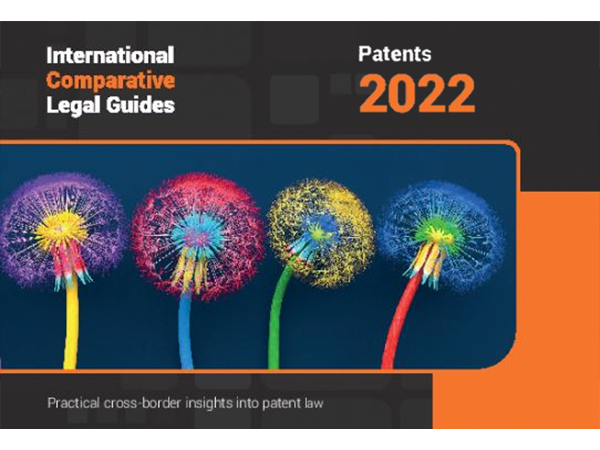
Intellectual Property
Viewpoints
Filter by:
PTAB Finds Recycled Art and Advanced State of Parallel District Proceeding Warrant Denial of IPR Trial
September 17, 2018 | Blog | By Peter Snell, Daniel Weinger
Last week the Patent Trial and Appeal Board (“PTAB”) provided yet another arrow in the patent owner’s quiver for defending against institution of IPRs. In NHK International Corp. v. Intri-Plex Technologies, Inc., IPR2018-00752, the PTAB exercised its discretion under 35 U.S.C. § 325(d) and denied institution because the asserted art was already considered during the original examination of the patent. The PTAB also found that denial was warranted under 35 U.S.C. § 314(a) in light of the additional factor that a district court trial on the same patent was imminent.
Read more
RPX Requests en banc Review in Applications in Internet Time v. RPX
September 13, 2018 | Blog | By Peter Snell, Daniel Weinger
On September 7, 2018, RPX Corporation (“RPX”) requested a rehearing en banc of the Federal Circuit’s July 2018 Applications in Internet Time, LLC v. RPX Corp. decision, which held that the Patent Trial and Appeal Board (“PTAB”) must use a flexible approach when determining what entities constitute real parties in interest for the purpose of inter partes review (“IPR”).
Read more
PTAB Denies Institution of IPR after Successive Petitions by Unrelated Co-Defendants
September 11, 2018 | Blog | By Brad M Scheller, Daniel Weinger, Courtney Herndon
Last week, the Patent Trial and Appeal Board (the “Board”) denied a second challenge to a patent where the petitioners were co-respondents in an ITC investigation.
Read more
Federal Circuit Holds that the Petitioner Bears the Burden to Show All Real Parties in Interest are Properly Named in a Petition for IPR
September 10, 2018 | Blog | By Peter Snell, Daniel Weinger, Anthony Faillaci
Six months later, and more than 2.5 years after service of the complaint on Activision, Bungie filed IPRs challenging Worlds’ patents.
Read more
Massachusetts Adopts Uniform Trade Secrets Act
September 6, 2018 | Blog | By Michael Renaud, Nicholas Armington
On October 1, 2018, Massachusetts will become the 49th state to adopt a version of the Uniform Trade Secrets Act. The version of the UTSA that Massachusetts will adopt bears notable similarities to the Defend Trade Secrets Act, the two year old federal trade secrets statute.
Read more
Not just for crypto – How blockchain technology will affect medical devices
September 4, 2018 | Blog | By Lisa Adams
Most people are familiar with blockchain technology because of its use in cryptocurrency, but its use is going to be far more widespread than just as a ledger for digital currency.
Read more
Inventorship
August 27, 2018 | Video | By Ken Jenkins
Ken Jenkins discusses the confusion surrounding inventorship and the need for inventors to maintain proper documentation once the initial inventorship determination is made to protect themselves as their patents gain value.
Read more
Valuable IP Portfolios
August 27, 2018 | Video | By Terri Shieh-Newton
Terri Shieh-Newton explains how a valuable IP portfolio is one that not only protects the company against competitors but also provides reassurances for investors.
Read more
A Sales Agent’s Home Office May Qualify as a Regular and Established Place of Business
August 20, 2018 | Blog | By Andrew DeVoogd, Daniel Weinger, Anthony Faillaci
In our continued post-TC Heartland coverage, the Southern District of New York recently held that an employee’s home office in New York constituted a “regular and established place of business” in the state as required by the patent venue statute, 28 U.S.C. § 1400(b).
Read more
Updates to the PTAB Trial Practice Guide Memorialize Current Practices While Leveling the Playing Field for Patent Owners
August 16, 2018 | Blog | By John Bauer
The Patent Trial and Appeal Board (PTAB) issued an August 2018 update to the American Invents Act Trial Practice Guide (the “Updated TPG”). The Updated TPG incorporates the PTAB’s current practices and provides further explanation of certain aspects of the PTAB’s standard practices to the public.
Read more
Google’s servers housed by a third-party ISP qualify as a regular and established place of business to establish proper venue in the Eastern District of Texas
August 15, 2018 | Blog | By Andrew DeVoogd, Anthony Faillaci
In our continued post-TC Heartland coverage, Judge Gilstrap in the Eastern District of Texas recently held that venue was proper because Google exercises exclusive control over physical servers implicated by the litigation, as well as the physical space within which the server is located and maintained.
Read more
International Trade Commission Clarifies Domestic Industry Requirements in Favor of Patent
August 6, 2018 | Alert | By Michael Renaud, James Wodarski, Andrew DeVoogd, Matthew Galica
A recent International Trade Commission decision, Vacuum Cleaning Devices, improves a patent owner’s ability to demonstrate that it possesses a statutorily required “domestic industry” and can therefore obtain relief from the Commission when others infringe its intellectual property. This alert reviews the Vacuum Cleaning Devices ruling, which serves to better align the statutory purpose of the ITC’s domestic industry requirement with contemporary business practices.
Read more
Lessons about Prosecution History Estoppel and Design Patents from Advantek Marketing, Inc. v. Shanghai Walk-Long Tools Co.
August 3, 2018 | Blog | By Christina Sperry
Patent practitioners are probably well familiar with circumstances in which prosecution history estoppel can limit the scope of a U.S. utility patent’s claims. Examples include claim amendments and statements made by the applicant during prosecution in papers filed with the U.S. Patent and Trademark Office (USPTO).
Read more
Patent Specification Drafting Considerations Highlighted by TF3 Limited v. TRE Milano, LLC
August 2, 2018 | Blog | By Christina Sperry
Is there any possible danger in using the abbreviation “i.e.” in the specification of a U.S. patent application? The Federal Circuit’s recent decision in TF3 Limited v. TRE Milano, LLC shows that the answer is “yes.”
Read more
Improper Venue for Web-Based Company in light of In re Cray
August 2, 2018 | Blog | By Andrew DeVoogd, Anthony Faillaci
In our continuing post-TC Heartland coverage, the District of Nevada recently identified a key factor in analyzing venue challenges in patent litigation: whether the public can access the defendant corporation or its services in the respective forum.
Read more
When Public Use Qualifies for the Experimental Use Exception to 35 U.S.C. § 102(b)
July 24, 2018 | Blog | By Marc Morley, Melissa Brayman
Some inventions require testing before they are ready for patenting, and sometimes that testing requires use by the public. A recent decision from the Federal Circuit provides additional guidance on what activities qualify for the experimental use exception to the public use bar of 35 U.S.C. § 102(b).
Read more
With its Vanda Pharma and Berkheimer Memos, USPTO Provides Increased Clarity and Predictability in the Patent Eligibility Determination in a Further Boost for Stakeholders and Innovators in Personalized Medicine
July 19, 2018 | Advisory
In the time since the Federal Circuit issued its Vanda Pharma decision in April, Vanda Pharm. Inc. v West-Ward Pharm. Intl. Ltd. 887 F.3d 1117 (Fed. Cir. 2018), we have had more good news for the patent eligibility of claims relating to diagnostic or similar tests utilized in treating patients.
Read more
The U.S. Trademark Office Adopts New Rule Requiring Appointment of U.S. Counsel to Represent a Non-US Domiciliary in Trademark Matters
July 18, 2018 | Blog | By Susan Neuberger Weller, F. Jason Far-hadian
Effective August 3, 2019, the United States Patent and Trademark Office (USPTO) will require foreign entity applicants, registrants, or parties to a trademark proceeding whose domicile is not located within the United States or its territories to be represented by qualified U.S. counsel (i.e., an attorney who is an active member of a state bar in the U.S.).
Read more
Recent ITC decision clarifies and eases domestic industry burden for patent holders
July 17, 2018 | Blog | By Andrew DeVoogd, Matthew Galica
A recent decision by the International Trade Commission (“ITC” or the “Commission”) improves intellectual property holders’ ability to prove that they have a “domestic industry” and obtain relief for infringement from the Commission.
Read more
Understanding Priority Claims for U.S. Patent Applications: Part 1
July 11, 2018 | Blog | By Christina Sperry, Elissa Kingsland
This article is first in a two-part series focusing on various issues related to priority claims in U.S. patent applications. Part 1 is a general overview of how to make a proper priority claim, without addressing how to correct an improper priority claim, which will be examined in Part 2.
Read more
Explore Other Viewpoints:
- Data Centers & Digital Infrastructure
- AI: The Washington Report
- Antitrust and Federal Regulation
- Appellate
- Arbitration, Mediation & Alternate Dispute Resolution
- Artificial Intelligence
- Awards
- Bankruptcy & Restructuring
- California Land Use
- Cannabis
- Class Action
- Complex Commercial Litigation
- Construction
- Consumer Product Safety
- Corporate Governance (ESG)
- Cross-Border Asset Recovery
- DEI Legal Developments
- Debt Financing
- Direct Investing (M&A)
- Diversity
- EB-5 Financing
- Education & Nonprofits
- Employment
- EnforceMintz
- Environmental (ESG)
- Environmental Enforcement Defense
- Environmental Law
- Environmental, Social, and Corporate Governance (ESG)
- FDA Regulatory
- False Claims Act
- Federal Circuit Appeals
- Financial Institution Litigation
- Government Law
- Growth Equity
- Health Care
- Health Care Compliance, Fraud and Abuse, & Regulatory Counseling
- Health Care Enforcement & Investigations
- Health Care Transactions
- Health Information Privacy & Security
- IP Due Diligence
- IPRs & Other Post Grant Proceedings
- Immigration
- Impacts of a New US Administration
- Insolvency & Creditor Rights Litigation
- Institutional Investor Class Action Recovery
- Insurance & Financial Services
- Insurance Consulting & Risk Management
- Insurance and Reinsurance Problem-Solving & Dispute Resolution
- Intellectual Property
- Investment Funds
- Israel
- Licensing & Technology Transactions
- Life Sciences
- Litigation & Investigations
- M&A Litigation
- ML Strategies
- Managed Care
- Medicare, Medicaid and Commercial Coverage & Reimbursement
- Mergers & Acquisitions
- Patent Litigation
- Patent Prosecution & Strategic Counseling
- Pharmacy Benefits and PBM Contracting
- Portfolio Companies
- Privacy & Cybersecurity
- Private Client
- Private Equity
- Pro Bono
- Probate & Fiduciary Litigation
- Products Liability & Complex Tort
- Projects & Infrastructure
- Public Finance
- Real Estate Litigation
- Real Estate Transactions
- Real Estate, Construction & Infrastructure
- Retail & Consumer Products
- Securities & Capital Markets
- Securities Litigation
- Social (ESG)
- Special Purpose Acquisition Company (SPACs)
- Sports & Entertainment
- State Attorneys General
- Strategic IP Monetization & Licensing
- Sustainable Energy & Infrastructure
- Tax
- Technology
- Technology, Communications & Media
- Technology, Communications & Media Litigation
- Trade Secrets
- Trademark & Copyright
- Trademark Litigation
- Unified Patent Court (UPC)
- Value-Based Care
- Venture Capital & Emerging Companies
- White Collar Defense & Government Investigations
- Women's Health and Technology





